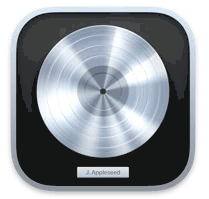Description

Anchor by Spotify

Hindenburg
Comprehensive Overview: Anchor by Spotify vs Hindenburg
Anchor by Spotify
a) Primary Functions and Target Markets:
- Primary Functions: Anchor is a podcast creation platform that offers users tools to create, distribute, and monetize podcasts easily. It provides features such as recording and editing within the app, hosting services, distribution to major podcast platforms, listener analytics, and the ability to integrate ads or receive listener support.
- Target Markets: Anchor primarily targets amateur and semi-professional podcasters who are looking for an accessible, easy-to-use solution to get started with podcasting. It attracts creators who may not have the technical skills or resources to invest in professional podcast production software.
b) Market Share and User Base:
- Anchor is one of the most popular podcasting platforms since it was acquired by Spotify, owing to its free distribution model and integration with Spotify. However, specific market share data can vary as it shares the ecosystem with multiple other podcast platforms and hosting services.
c) Key Differentiating Factors:
- Ease of Use: Anchor is designed to be very user-friendly, with minimal technical requirements, making it appealing to beginner podcasters.
- Cost: Anchor offers a free hosting service, which is not common among podcast hosting providers. This makes it attractive for creators looking to minimize costs.
- Integration with Spotify: Being part of Spotify allows Anchor users to distribute directly to Spotify and potentially reach a wider audience. Spotify's algorithms and interfaces can aid in discoverability for podcasts.
Hindenburg
a) Primary Functions and Target Markets:
- Primary Functions: Hindenburg is audio editing software often used for podcasting and radio production. It provides users with a suite of tools for high-quality audio editing, including automatic audio leveling, multitrack editing, and advanced noise reduction features.
- Target Markets: Hindenburg serves more professional and semi-professional podcasters, journalists, and broadcasters who require robust audio editing capabilities. It is designed for those who have more experience in audio production and are willing to invest in a more comprehensive tool.
b) Market Share and User Base:
- Hindenburg targets a niche market of podcasters and audio professionals. While not as broadly popular as Anchor in terms of casual users, it is highly regarded within professional circles for its robust editing capabilities. Its market share is smaller but more specialized.
c) Key Differentiating Factors:
- Advanced Editing Features: Hindenburg offers professional-grade editing tools that go beyond basic cutting and trimming, catering to users who have complex production needs.
- Targeted for Professionals: Its usability is not just limited to simple podcast production but extends to high-quality radio production, making it valuable for professionals who need precise and detailed audio work.
- Paid Software Model: Unlike Anchor, Hindenburg operates on a paid licensing model, reflecting its positioning as a tool for serious creators with specific needs in audio quality and editing.
In summary, Anchor by Spotify and Hindenburg serve different sections of the podcasting market. Anchor is ideal for beginners looking for a free, easy entry into the world of podcasting, whereas Hindenburg is suitable for professionals who need advanced editing tools and are willing to pay for those capabilities.
Contact Info

Year founded :
Not Available
Not Available
Not Available
Not Available
Not Available

Year founded :
Not Available
+49 22 23901940
Not Available
Canada
http://www.linkedin.com/company/hindenburg
Feature Similarity Breakdown: Anchor by Spotify, Hindenburg
When comparing Anchor by Spotify and Hindenburg, both of which are popular tools for podcast creation and editing, it’s essential to consider their core features, user interfaces, and any unique aspects that distinguish them. Here's a breakdown:
a) Core Features in Common
Anchor by Spotify:
- Ease of Use: Anchor is designed for simplicity, allowing users to easily record, edit, and publish podcasts from a single platform.
- Recording and Editing: Users can record directly within the app or upload audio files. Basic editing features like cutting, trimming, and rearranging segments are available.
- Distribution: Anchor automates the distribution of podcasts to several platforms, including Spotify, Apple Podcasts, and others.
- Monetization: Provides options for integrating ads and listener support.
- Analytics: Offers basic analytics on listens and audience demographics.
Hindenburg:
- Ease of Use: While more complex than Anchor, Hindenburg is user-friendly with features tailored for audio storytelling and journalism.
- Recording and Editing: Offers professional-grade multi-track recording and editing. Users can easily adjust levels, trim audio, and manage multiple tracks.
- Publishing: Allows users to export content in various formats suitable for different podcast hosting services.
- Sound Quality: Focuses on maintaining high audio quality with features like automatic leveling.
b) User Interface Comparison
-
Anchor by Spotify:
- The interface is minimalistic, with a strong focus on ease of navigation for beginners. The app provides a streamlined process with clear steps for recording, editing, and publishing. It is mobile-friendly, offering similar functionality on both desktop and mobile devices.
-
Hindenburg:
- The interface is more robust and feature-rich, catering to users with a background in audio production or those looking for more fine-tuned control over their content. It has a classic DAW (Digital Audio Workstation) layout with multiple tracks and a timeline, making it more suitable for detailed editing work on desktop platforms.
c) Unique Features
Anchor by Spotify:
- Mobile-Friendly: Designed to be highly accessible on mobile devices, allowing users to create and manage podcasts on-the-go.
- Built-in Distribution to Spotify: Seamless integration with Spotify, leveraging the platform’s music library for legal use in podcasts through partnerships.
- Community Features: Offers more social-sharing features and collaborative podcasting options through invites by link.
Hindenburg:
- Professional Audio Quality: Known for its automatic levels and voice profiler tools aimed at maximizing the quality of spoken word audio.
- Advanced Editing Tools: Features like clipboard for reordering clips, auto-leveling, and a focus mode for honing in on segments needing attention.
- Reporting Focus: Initially designed for journalists, it includes features like an interview mode and the ability to make markers and notes directly on the timeline.
In summary, Anchor by Spotify suits new or casual podcasters looking for an easy, integrated, and mobile-friendly way to produce content. Hindenburg, meanwhile, serves more advanced users in the field of audio journalism or those seeking greater control and superior audio quality.
Features

Not Available

Not Available
Best Fit Use Cases: Anchor by Spotify, Hindenburg
Anchor by Spotify and Hindenburg serve different niches within the audio creation landscape, catering to varying needs based on business types, project goals, and industry requirements. Here’s a breakdown of the most suitable use cases for each:
a) Anchor by Spotify
Best Fit Use Cases:
1. Independent Podcasters and Content Creators:
- Overview: Anchor provides a user-friendly, all-in-one platform for podcasting that's especially beneficial for independent creators and hobbyists.
- Key Features: Easy podcast creation tools, built-in monetization options, and seamless distribution to Spotify and other platforms.
2. Small Businesses and Startups:
- Overview: Small businesses looking to explore podcasting as a marketing strategy can leverage Anchor's no-cost entry point and comprehensive tools.
- Key Features: Simple interface, analytics dashboard to track listener data, and opportunity to engage with customers through audio content.
3. Educational Institutions and Nonprofits:
- Overview: Ideal for educational or nonprofit organizations that want to experiment with informational series or educational content without incurring high costs.
- Key Features: Free hosting and distribution, which enable budget-conscious organizations to disseminate their content widely.
b) Hindenburg
Best Fit Use Cases:
1. Professional Podcasters and Journalists:
- Overview: Hindenburg is designed for audio professionals who demand high-quality editing tools and advanced features for storytelling.
- Key Features: Specialized tools for narrative podcasting, automatic leveling, voice profiling, and a robust workflow for editing.
2. Radio Broadcasters:
- Overview: Radio stations looking for an efficient digital audio workstation (DAW) that aligns with the fast-paced demands of radio production.
- Key Features: Multitrack recording, metadata publishing directly from the platform, and support for broadcast-standard audio files.
3. Production Companies:
- Overview: Suitable for production companies involved in complex audio projects that require detailed editing and high production values.
- Key Features: Advanced multi-track capabilities, support for various audio formats, and tools for intricate sound piece assembly.
d) Catering to Different Industry Verticals or Company Sizes
Anchor by Spotify:
- Industry Verticals: Primarily serves verticals where cost-effectiveness and ease of use are key, such as small businesses, education, and indie media.
- Company Sizes: Best suited for individuals, small teams, or organizations looking to dip their toes into podcasting without significant financial investment.
Hindenburg:
- Industry Verticals: A favorite among industries where audio quality and storytelling are paramount, like journalism, radio broadcasting, and professional media production.
- Company Sizes: Serves medium to large companies and professional entities with dedicated audio production resources seeking advanced editing capabilities.
Conclusion: The choice between Anchor by Spotify and Hindenburg largely depends on the user's needs for simplicity versus professionalism in audio production. Anchor is optimized for ease and accessibility, making it ideal for newcomers and budget-limited projects, while Hindenburg caters to seasoned professionals with its sophisticated editing suite and robust feature set.
Pricing

Pricing Not Available

Pricing Not Available
Metrics History
Metrics History
Comparing undefined across companies
Conclusion & Final Verdict: Anchor by Spotify vs Hindenburg
As of my knowledge cutoff in October 2023, let's evaluate Anchor by Spotify and Hindenburg to determine the overall value each product offers.
Conclusion and Final Verdict
a) Considering all factors, which product offers the best overall value?
The "best overall value" depends largely on the user's specific needs and priorities. If cost and ease of use are primary considerations, Anchor by Spotify might offer the best overall value. It's free and designed to be user-friendly, especially appealing for hobbyists and those new to podcasting. However, if you're seeking robust editing features, high-quality audio production, and professional-grade tools, Hindenburg may offer superior value.
b) Pros and Cons of Each Product
Anchor by Spotify
-
Pros:
- Free to Use: No cost for hosting or basic editing, which is ideal for beginners.
- Integrated Hosting and Distribution: Makes it easy to publish podcasts on various platforms.
- Monetization Options: Offers ad placement services even for smaller podcasts.
- User-Friendly Interface: Simplifies the process for users with limited technical skills.
-
Cons:
- Limited Editing Features: Basic editing tools may not satisfy more advanced needs.
- Audio Quality Limitations: Might not support high audio production quality.
- Platform Dependency: Heavily tied to Spotify, which might affect distribution preferences.
Hindenburg
-
Pros:
- Professional Editing Tools: Offers advanced features suitable for high-quality audio production.
- Journalist-Friendly Features: Includes options specifically beneficial for narrative storytelling and reports.
- Customization: Extensive settings cater to detailed audio editing needs.
-
Cons:
- Cost: Higher upfront or subscription costs can be a barrier for beginners.
- Learning Curve: More complex interface might require time to learn and master.
- No Integrated Hosting: Users will need separate solutions for hosting and distribution.
c) Recommendations for Users Deciding Between Anchor by Spotify and Hindenburg
-
Assess Your Needs: If you are a beginner or casual podcaster seeking a cost-effective, easy-to-use solution, Anchor by Spotify is likely your best option. Its seamless integration with Spotify makes it an attractive choice for those looking to enter the podcasting space hassle-free.
-
Prioritize Audio Quality and Features: If you are focused on creating professional-grade content and require advanced editing capabilities, Hindenburg will better serve your needs. Consider this choice particularly if your podcast involves narrative elements or journalistic content that benefits from detailed editing.
-
Consider the Long-term Growth Potential: Reflect on how you envision your podcast growing. Anchor might be suitable for starting out, but as your needs become more sophisticated, transitioning to a platform like Hindenburg could better accommodate your growth and professional aspirations.
-
Budget and Investment: If funding and resources permit, investing in Hindenburg may be worthwhile for the quality and functionality it offers. Conversely, for a cost-effective start, Anchor’s free access is advantageous, allowing savings in early stages.
Ultimately, your choice will depend on balancing immediate needs with future ambitions, considering both budget constraints and the level of professional quality desired.
Add to compare
Add similar companies



